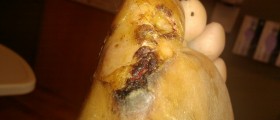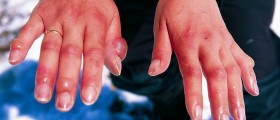
Human skin is the largest organ we have. It is consisted of three layers, called epidermis (outer layer), dermis (middle layer of the skin) and subcutis (bottom layer of the skin). The epidermis is made of underlying section of cells which create new skin cells, while dermis contains sweat glands, hair follicles and blood vessels. The bottom layer of the skin, subcutis, is made of fat and collagen and it protects the body and regulates our temperature.
What is Cellulitis?
Cellulitis is infection of the dermis and subcutis layers of the skin. It is usually caused by harmless fungi or bacteria normally living on the skin surface. When these microorganisms move to deeper layers of the skin because of some cuts, burns or insect bites they cause problems. Eczemas and fungal infections of the feet are also possible entering points for these harmful microorganisms. Affected skin and tissue are prominently red, swollen, hot and painful for the patients.
Facial cellulitis is rare condition affecting the skin (dermis and subcutis) on the face, responsible for about 8.5% of all cellulitis cases. It is more frequently find in young children (under 3 years of age) and people over 50.
Symptoms of Facial Cellulitis in Babies
Young children suffering from facial cellulitis may be crying unusually, having some staring expression on the face. In some cases, these kids might be very sleepy and unwilling to wake up, easily irritated and don’t want to be held in the arms. Their skin could become pale and blotchy, the body very floppy and unresponsive and they might vomit, refuse food or experience lack of appetite.
Facial Cellulitis Health Complications
Infection of deeper layers of the skin may cause further medical problems than just skin swelling and pain. Patients suffering from cellulitis may experience abscesses on the infection site, blood poisoning or even severe brain infection (meningitis).
Abscesses are pus filled lumps that may form on the site of infection or somewhere near. These skin problems can be resolved with antibiotics used to treat cellulitis or, if this doesn’t happen, doctors may drain the pus from the abscess.
Bacterial meningitis is the most serious complication of cellulitis and it is considered to be medical emergency. It is caused by spread of bacteria from the deep layers of the skin to the brain membranes. Untreated meningitis may provoke brain damage or infect the blood and lead to blood poisoning. Because of this, children should be vaccinated against meningitis at very young age.
Another possible complication of facial cellulitis is blood poisoning, if the harmful bacteria enter the blood. People with blood poisoning have extremely high temperature (38ºC, which is 100.4ºF or even higher), rapid breathing and heartbeat and low blood pressure. They could suffer from diarrhea and decreased flow of urine. Their skin is cold, clammy and very pale, while their mental status can also be impaired, leading to confusion, disorientation and even unconsciousness.

















Your thoughts on this
Loading...